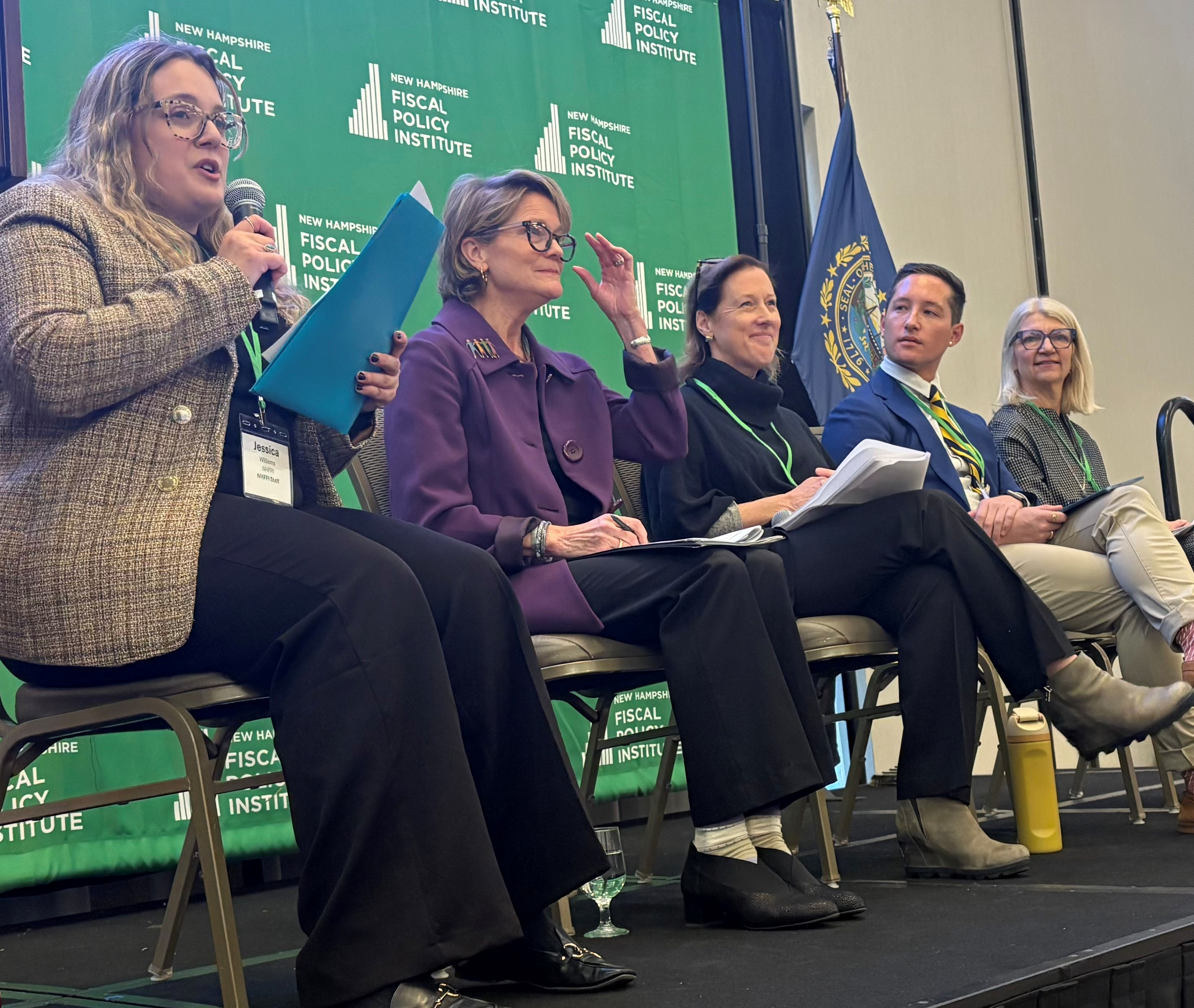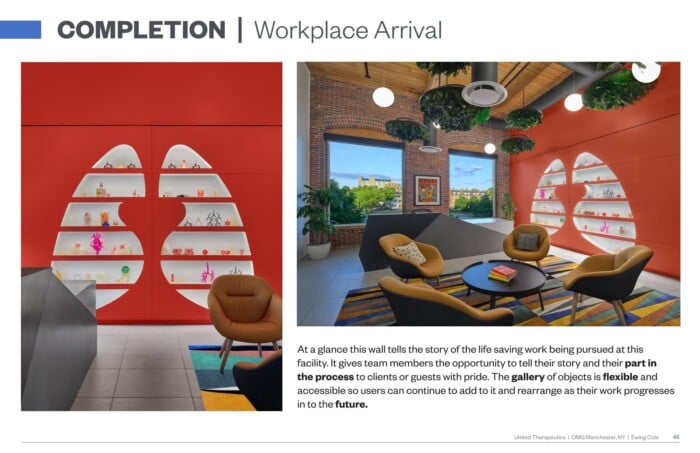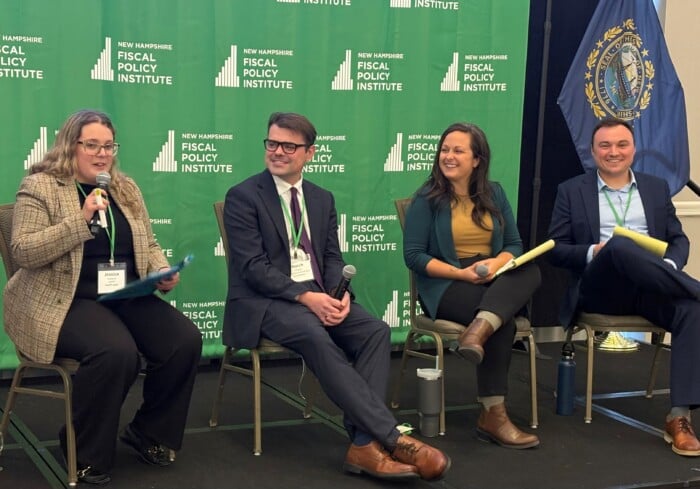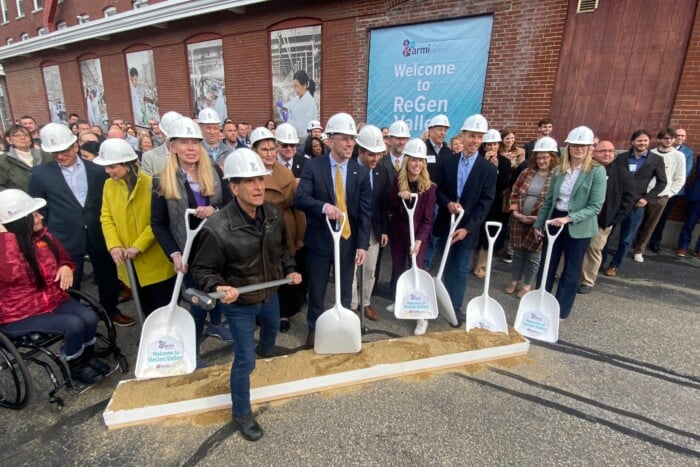‘A structural affordability gap’
Conference explores challenges of living in NH
Living in New Hampshire is getting harder and harder to afford.
With rising costs from housing to health care, from child care to aging, Granite Staters are falling behind in their ability to pay for it all, according to the issues and data from a recent New Hampshire Fiscal Policy Institute (NHFPI) conference.
Gene Martin, NHFPI’s executive director, called it “a structural affordability gap here in our state,” in opening remarks at the conference that attracted about 500 registrants, several of whom were members of the New Hampshire Legislature who attended the daylong session Oct. 24 at the Grappone Conference Center in Concord.
Martin described it as an economy that is “harder and harder for ordinary folks to get by, no matter how hard they work or how carefully they plan.”
“It’s a statewide problem with long-term consequences. If families can’t afford to live here, our workforce will shrink. Young people will leave,” said Martin. “Employers will continue to struggle to hire, and as our aging population continues to age, they’ll grow without young workers to sustain the economy or provide the care that they will need.”
Breakout sessions during the course of the day-long event spoke to the conference’s overall theme that Granite Staters are working harder and falling behind. These breakouts dealt with health care, housing, caregiving and what was called “rurality,” the idea that residents of rural areas have a more difficult time accessing and affording certain essential services.
Housing is the No. 1 driver and biggest challenge to a family’s ability to afford to live in New Hampshire.
“Prices have changed quite a bit over the last couple of decades,” said Jessica Williams, a policy analyst at NHFPI. “Dating all the way back to 1999 up to 2024, we see a 275% increase in single-family house pricing.”
After a record-breaking median single-family home price of $569,450 in June, the price eased back to $532,000 in September.
NHFPI, in the data analysis for the conference, used a family of four (two adults, two children) and used the 2024 dollar value to track spending and affordability trends.

The biggest factor among the cost challenges facing New Hampshire is housing, as discussed by a panel at the NH Fiscal Policy Institute conference on Oct. 25. Panelists included, from left, moderator Jessica Williams from NHFPI, Natch Greyes from the NH Business and Industry Association, Sarah Wrightsman from New Hampshire Housing, and Nick Taylor from Housing Action NH. (Photo by Paul Briand)
Natch Greyes, vice president of public policy at the Business and Industry Association of New Hampshire, said only 15% of Granite Staters can afford to purchase a single-family home at the current price points. A workforce’s inability to buy a house directly impacts the New Hampshire economy’s ability to attract and keep business, according to Greyes.
“We have one of the highest rates of people in the manufacturing workforce of any state,” said Greyes. “If you can’t find that workforce, there’s no incentive for you as a business to stay in New Hampshire.”
Greyes participated in the housing panel along with Nick Taylor, executive director of Housing Action NH, and Sarah Wrightsman, manager of community engagement at New Hampshire Housing. Williams served as moderator.
Taylor described the 2025 New Hampshire legislative session as “the tale of two sessions.”
Taylor lauded legislative action in 2025 that expanded the use of accessory dwelling units in residential areas and a streamlined state permitting process for residential developments. But he said “a tougher budget cycle” drastically cut state funding for housing programs.
Spending that totaled about $57.8 million in the FY 2025 budget that ended June 30 got pruned to $17.5 million in the FY 2026 budget that started July 1.
The second biggest driver of the affordability issue facing New Hampshire is health care.
According to Phil Sletten, NHFPI’s research director, there has been a 76% increase in median household income, unadjusted for inflation, from 2005 to 2024 in New Hampshire. But out-of-pocket health care expenditures, as experienced by a family’s health insurance plan, have increased 163% over that same period.
“Employees have never seen higher deductibles,” said Lucy Hodder, director of the Health and Life Sciences Law and Policy programs at University of New Hampshire Franklin Pierce School of Law.
“When that happens and that risk shift happens, the ripple effect is across our communities,” she added. “People can’t afford what they’re getting referred to for care if they can get in the door at all, and so they either choose not to get it, or, even worse, they can’t access insurance coverage.”
Hodder was part of the health care breakout session along with Kirk Williamson, project director of the Green Mountain Care Board; Jennifer Frizzell, project coordinator of the NH Health Cost Initiative; and Deborah Fournier, director of health law and policy at UNH’s Institute for Health Policy & Practice.
A major cost factor in the health care landscape is the cost of prescription drugs, particularly the class of GLP-1 drugs used to treat type 2 diabetes and obesity and now the go-to drug for general weight loss.
“Americans pay the highest prices in the world for prescription drugs, and that’s not because of innovation, and that’s not because of a free market. It’s because we have a system of legalized monopolies,” said Williamson, who until July 1 was the executive director of the New Hampshire Prescription Drug Affordability Board.
“We spent $1.3 billion in 2024 on prescription drugs; 46% of that was for specialty drugs, and a majority of that was for GLP-1s,” he added.
Williamson’s work on prescription drugs for the state was cut off when the affordability board was eliminated as part of the state’s current new budget. He is now project director of the Green Mountain Care Board, an independent, five-member board established by the Vermont Legislature to improve the health of Vermonters.
These higher deductibles contribute to escalating medical debt, according to Frizzell.

The rising cost of health care was included among the topics discussed at the Oct. 25 conference held by the New Hampshire Fiscal Policy Institute. Panelists on this topic included, from left, moderator Jessica Williams from NHFPI, Lucy Hodder from the UNH Franklin Pierce School of Law, Deborah Fournier from UNH’s Institute for Health Policy & Practice, Kirk Williamson from the Green Mountain Care Board, and Jennifer Frizzell the NH Health Cost Initiative. (Photo by Paul Briand)
“We now have a phenomenon where more than 40% of people are carrying medical debt from one year into another; 60% of personal bankruptcies are motivated by medical debt,” said Frizzell, “and we’re seeing more and more families falling into debt as they struggle through the collections process in health care that’s causing more damage to consumer credit, more ways that the intersection of people’s financial strain for medical costs is impacting their ability to meet other expenses.”
On the subject of caregiving, conference participants noted it covers not only young children but older adults.
The annual cost to a family for center-based care for two children under the age of 5 is about $30,000 a year, sometimes forcing an adult to be the in-home caregiver.
New Hampshire has the second oldest average age population in the country, and adult care in a skilled nursing or intermediate care facility can cost about $142,000 per year.
According to NHFPI, there are impacts on the Granite State economy when individuals have their ability to earn income limited due to caregiving responsibilities.
NHFPI used its Oct. 20 report, “Affordability Eroded: Changes to the Cost of Living in New Hampshire,” as the tee to help drive the issues discussed at the conference.
The report concluded that, compared to the 2015 four-person family, a 2024 family had over $17,000 less in surplus income annually.
“Housing, health care and child care costs have risen far faster than paychecks, while even essentials like food and energy strain family budgets,” said the report.














